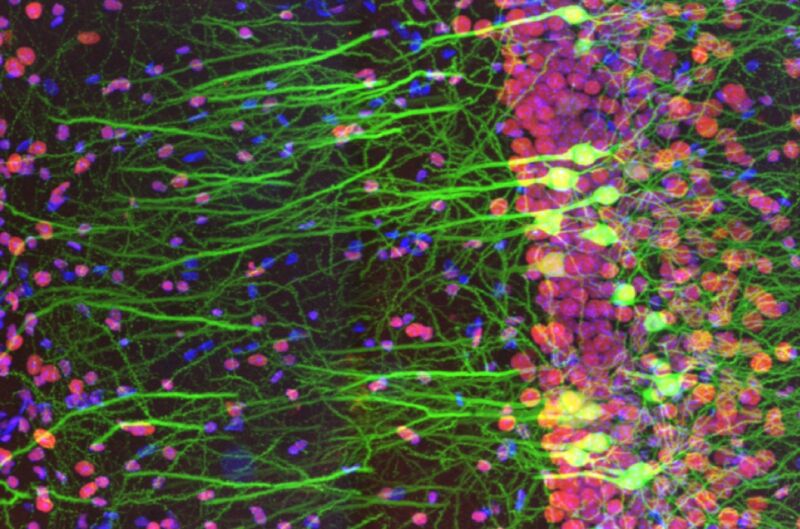Under the microscope–.
The 2019 Olympus Global Image of the Year honorees find beauty under the microscope.
Jennifer Ouellette
–
.



Enlarge / Detail from the winning entry in the first Olympus Global Picture of the Year Life Science Light Microscopy Award. It reveals immunostaining of a mouse-brain slice with 2 fluorophores.
.
For a number of years now, we’ve regularly included the winners of Nikon’s annual Small World microscopy contest. Now, Olympus has actually gone into the artful imaging arena with its very first International Image of the Year Award. Like the Small World contest, the intent is to highlight artful scientific imaging in hopes of motivating the world to appreciate the fundamental appeal of microscopy imaging. Olympus revealed the winners (one worldwide winner, plus 3 local winners), in addition to numerous runners-up, last month. They do not disappoint.
As Ars’ John Timmer kept in mind in his 2018 Small World protection: ” Microscopy is a sibling of photography in numerous ways beyond the involvement of high-end lenses. While it might not matter for clinical functions, a compelling microscope image depends upon things like structure, lighting, direct exposure, and more. And these days, both fields rely greatly on post-processing.” All those components are plentiful in the brand-new crop of Olympus winners.
Spain’s Ainara Pintor snagged the top honor from over 400 submissions with her gorgeous image of an immunostained mouse-brain piece, titled Neurogarden The regional winner for Europe, the Middle East, and Africa was the UK’s Alan Prescott, for his image capturing the frozen section of a mouse’s head.
Honorable points out included striking microscopic pictures of photonic crystals in insect scales, crystallized amino acids, desert locust wings, and opal embedded in iron sandstone, to name a few. Clearly, the field of photomicroscopy is still drawing in top-notch skill.
-
Worldwide Winner: immunostaining of a mouse brain piece with two fluorophores
-
Regional Winner for the Americas: it’s a vibrant tardigrade!
Tagide de Carvalho/Olympus -
Asia-Pacific Regional Winner: Autofluorescence image of a mouse embryo.
Howard Vindin/Olympus -
EMEA Regional Winner: frozen area of a mouse’s head.
Alan Prescott/Olympus -
Honorable Mention: mouse spine.
Tong Zhang/Olympus -
Respectable Mention: image of 3D depth color-coded restoration of confocal images of microtubules in monkey fibroblast cells.
Daniela Malide/Olympus -
Photonic crystals in pests (beetles and weevils) FTW!
Rudolf Buechi/Olympus -
Preparation of amino acids crystallized out of an ethanol solution.
Justin Zoll/Olympus -
The desert locust is one example of an insect types that has actually progressed foldable wings, the much better to keep them clean and undamaged. This image is called A Road in the Sky because “veins look like roadways and spinal columns on [the] wing membrane resemble stars.”
Hamed Rajabi/Olympus -
Green gem product, prase opal, magnified through a microscopic lense, appears like an aerial coastline view. The brown areas are iron sandstone host rock.
Nathan Renfro/Olympus -
Tiny image of fruit fly brain.
Martin Hailstone/Olympus -
Inflorescence of developing flower buds expressing fluorescent reporters (cyan), with cell walls stained red.
Nat Prunet/Olympus -
The ovary of a gall-inducing wasp showing the eggs.
Ming-Der Lin/Olympus

